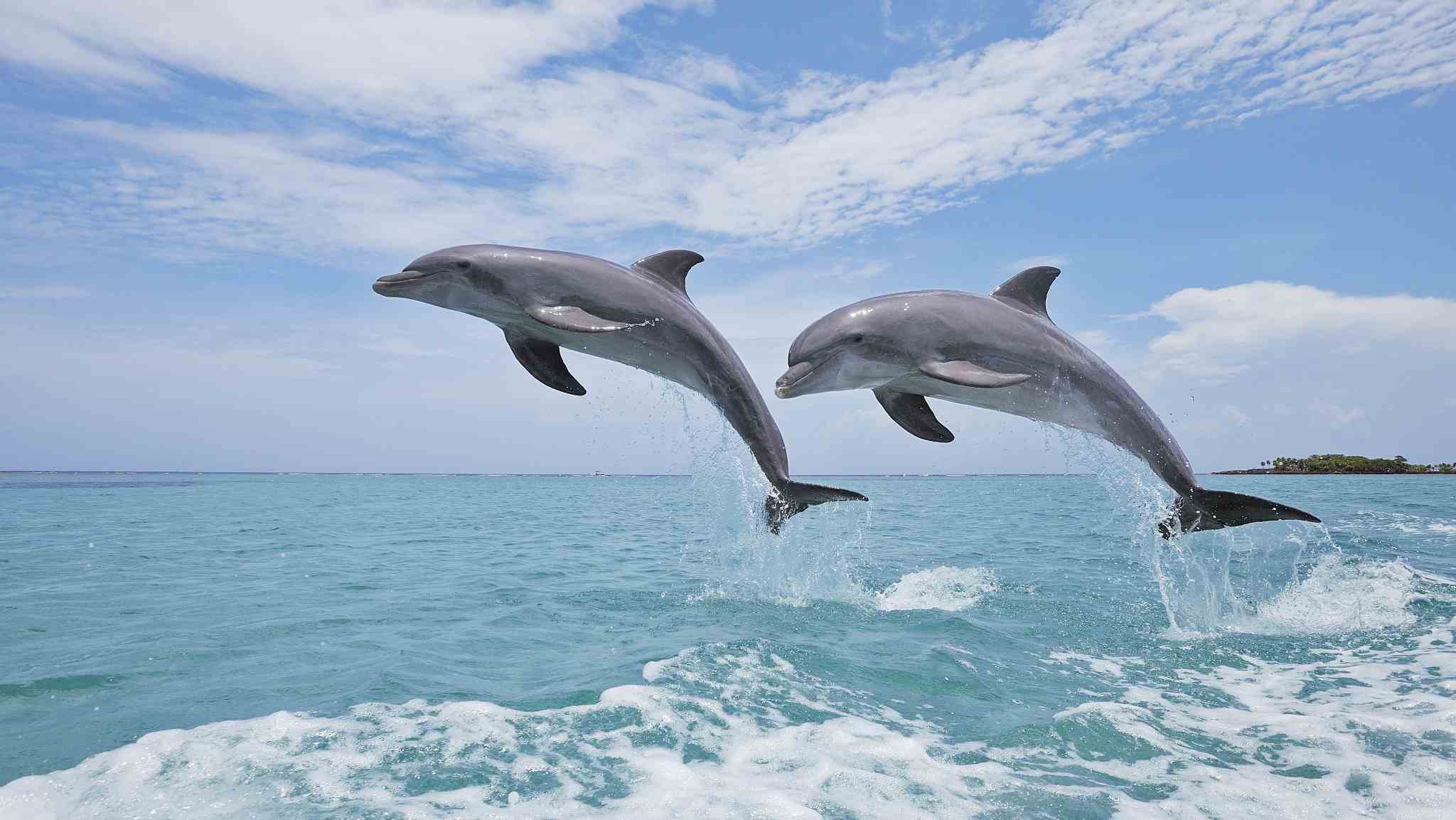
File photo: CGTN
CANBERRA, Feb. 11 (Xinhua) -- Social circles and mothers' groups play an important role in the lives of southern Australian bottlenose dolphins, according to an Australian study published by Flinders University on Monday.
Researchers observed that female dolphins in South Australia's Coffin Bay were more likely to form social bonds with kin in similar reproductive conditions. For example, dolphins with young calves were more likely to socialize with others with young calves.
Fernando Diaz-Aguirre, the lead author of the study, said the behavior is similar to that of human communities, and similar trends have also been observed in giraffes, lions, grey kangaroo and hyena populations.
"These close social groups among related females appear to be vital for them while raising young calves, or for those without calves who also combine due to similar biological requirements related to feeding and mating," he said in a media release.
"As well as key pointers on social evolution and behavior in these highly complex marine mammals, our study also provides important information for the conservation of the Coffin Bay population."
The study found that females with young calves tend to remain in three areas of the bay -- information that could be crucial in reducing incidental deaths from fishing gear or boat strikes.
Luciana Moller, a dolphin and whale expert from Flinders University, said the study sheds light on how social behavior is passed down through generations of dolphins.
"Our field studies are not only important for understanding the evolution of complex animal societies, but for providing information to conservation managers to sure the future survival of these unique dolphin populations," she said.
"Small resident populations of dolphins, as the one in Coffin Bay, are particularly vulnerable to changes in the environment, and represent sentinels of the health of coastal ecosystems."


